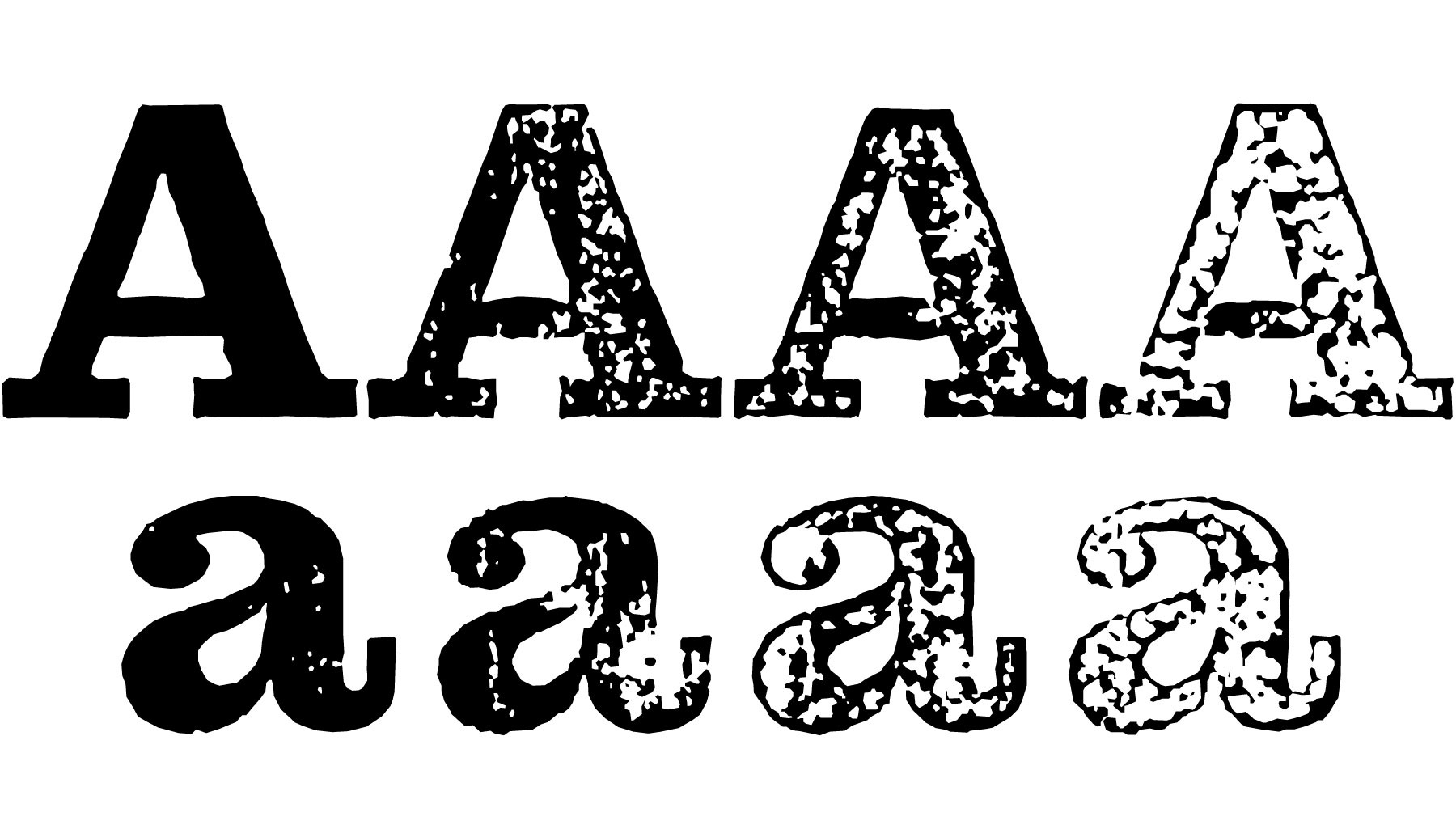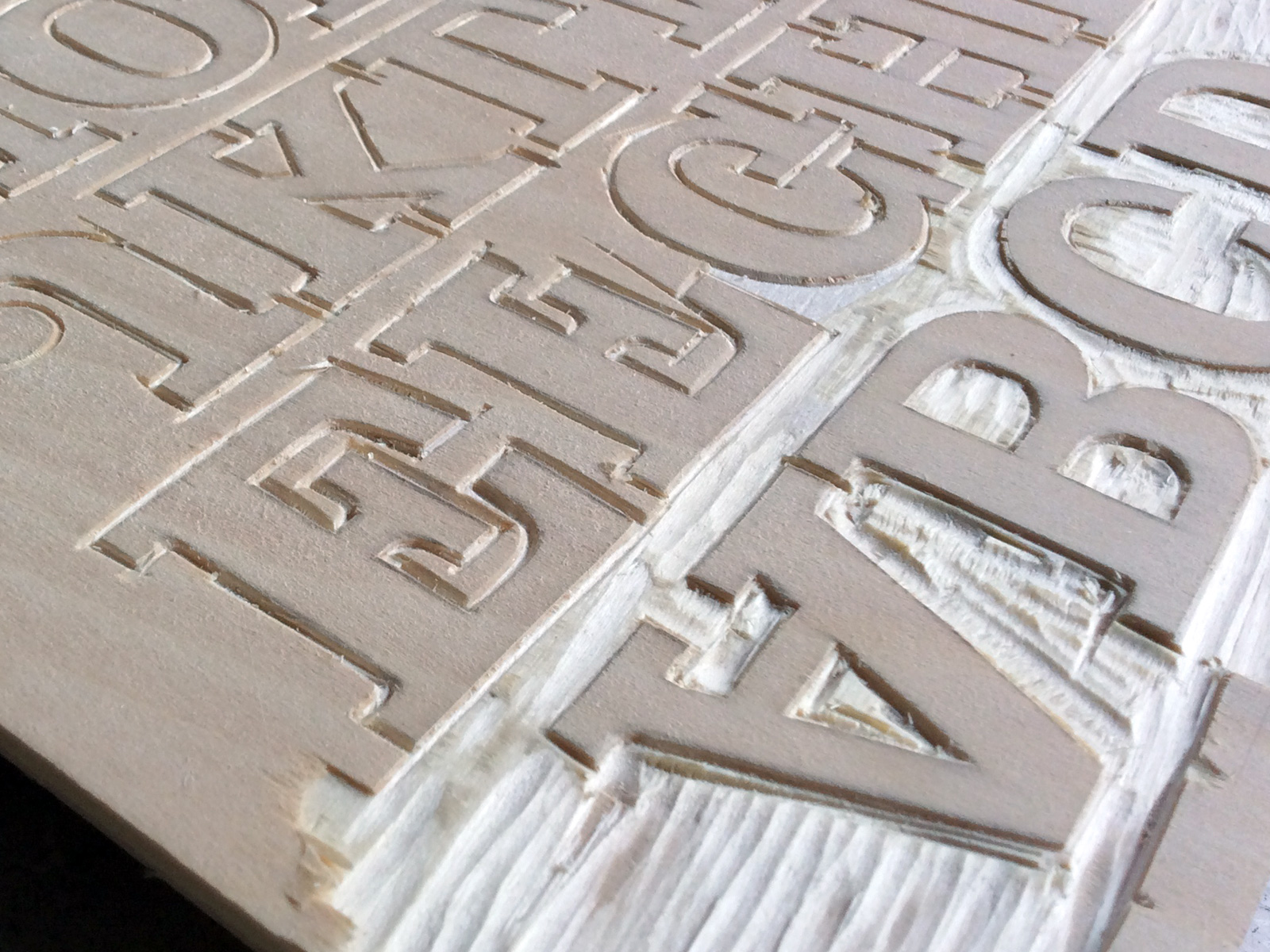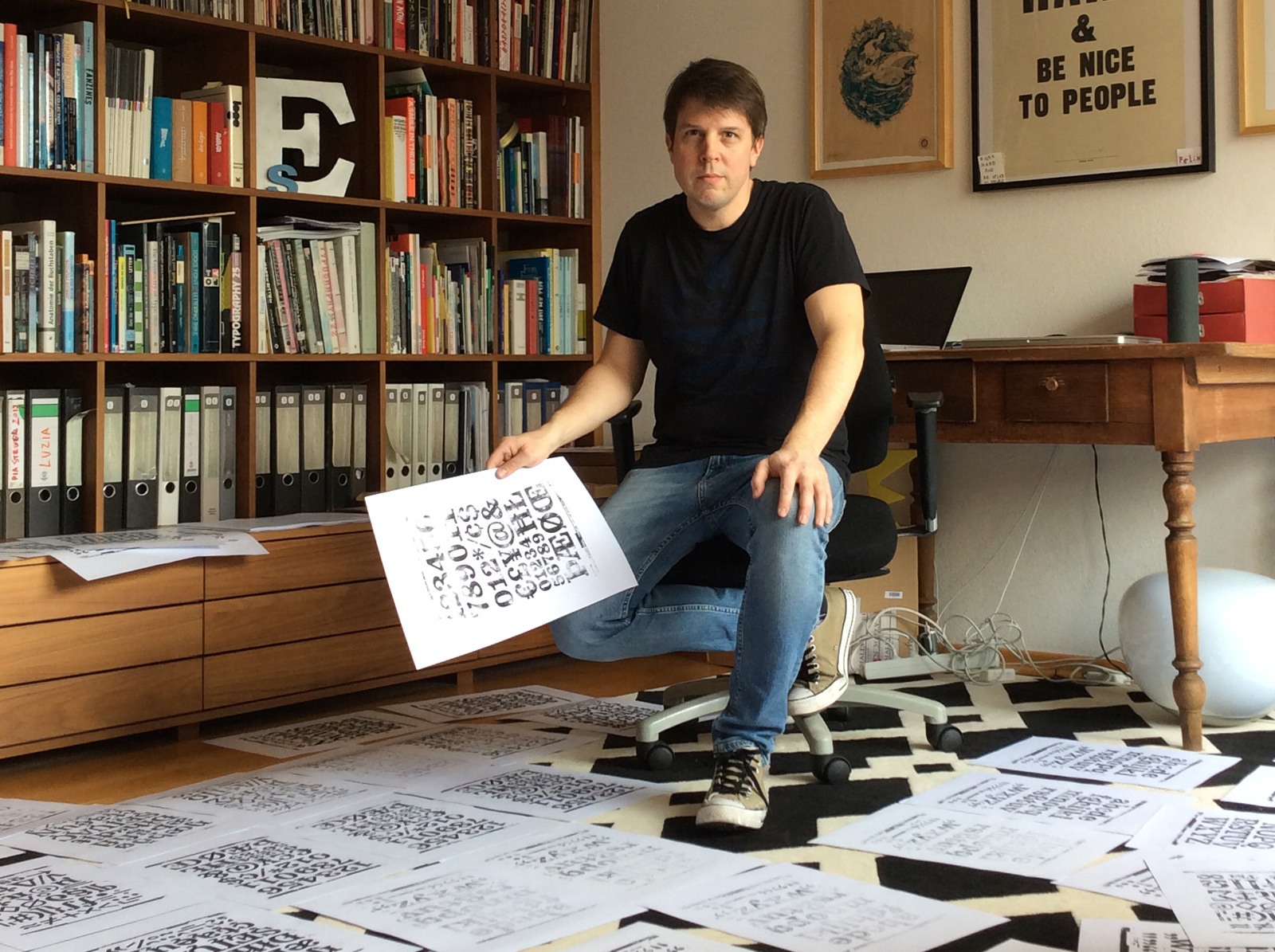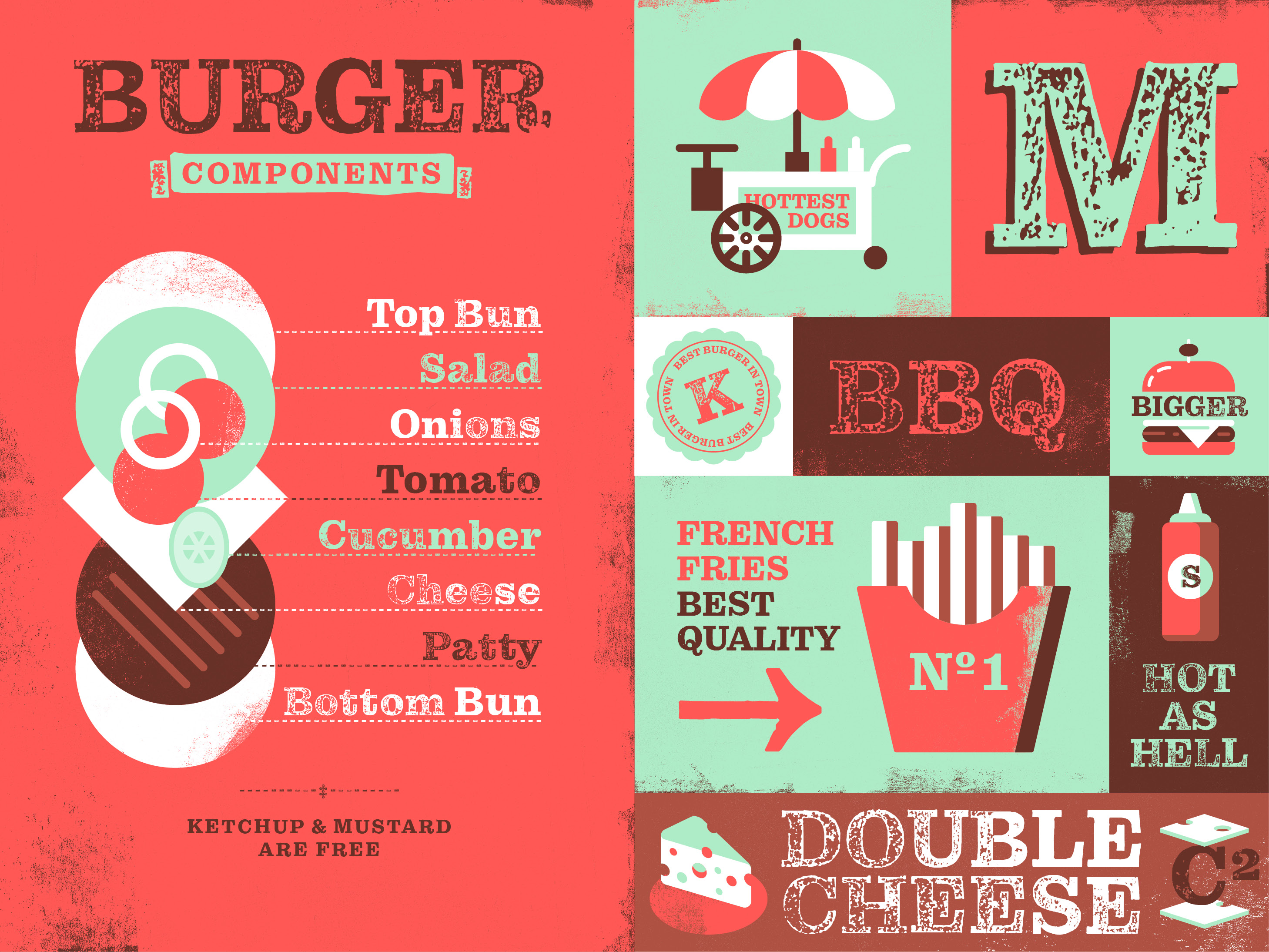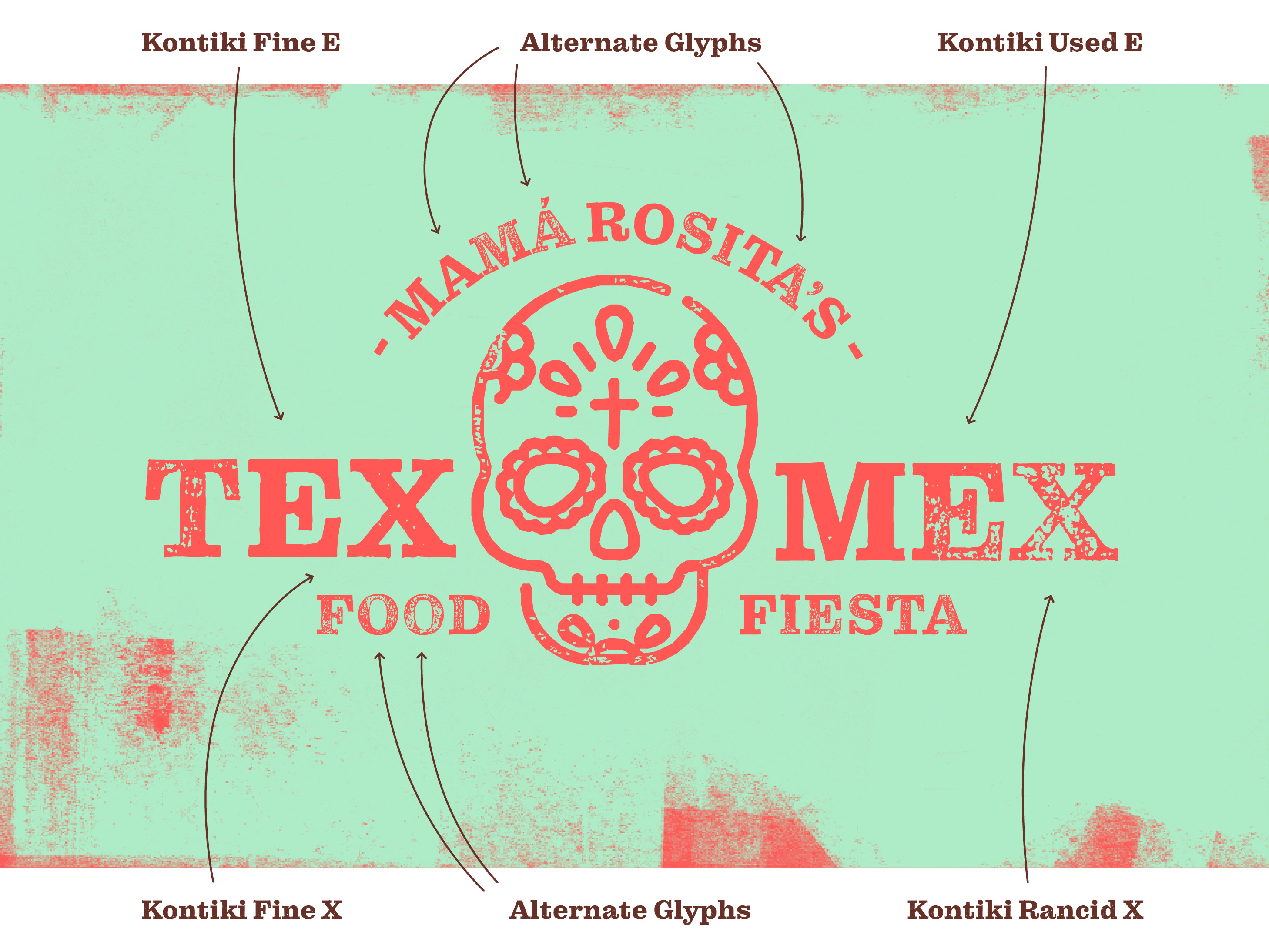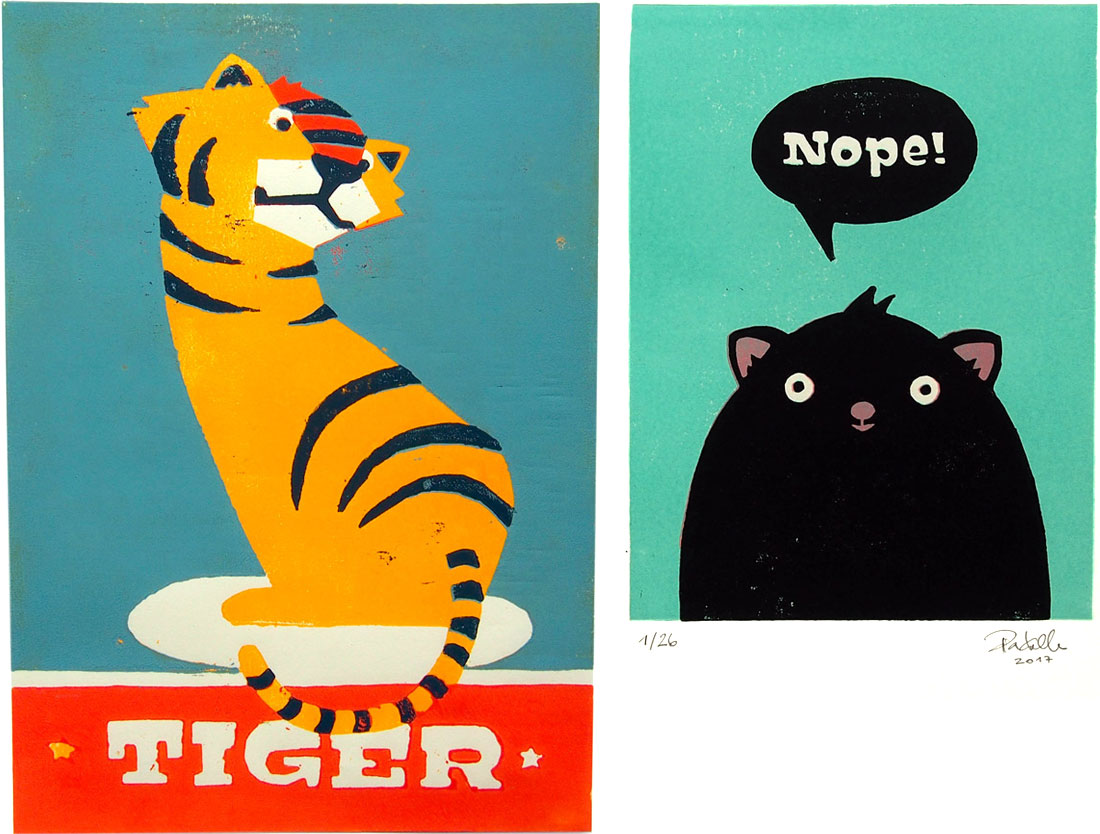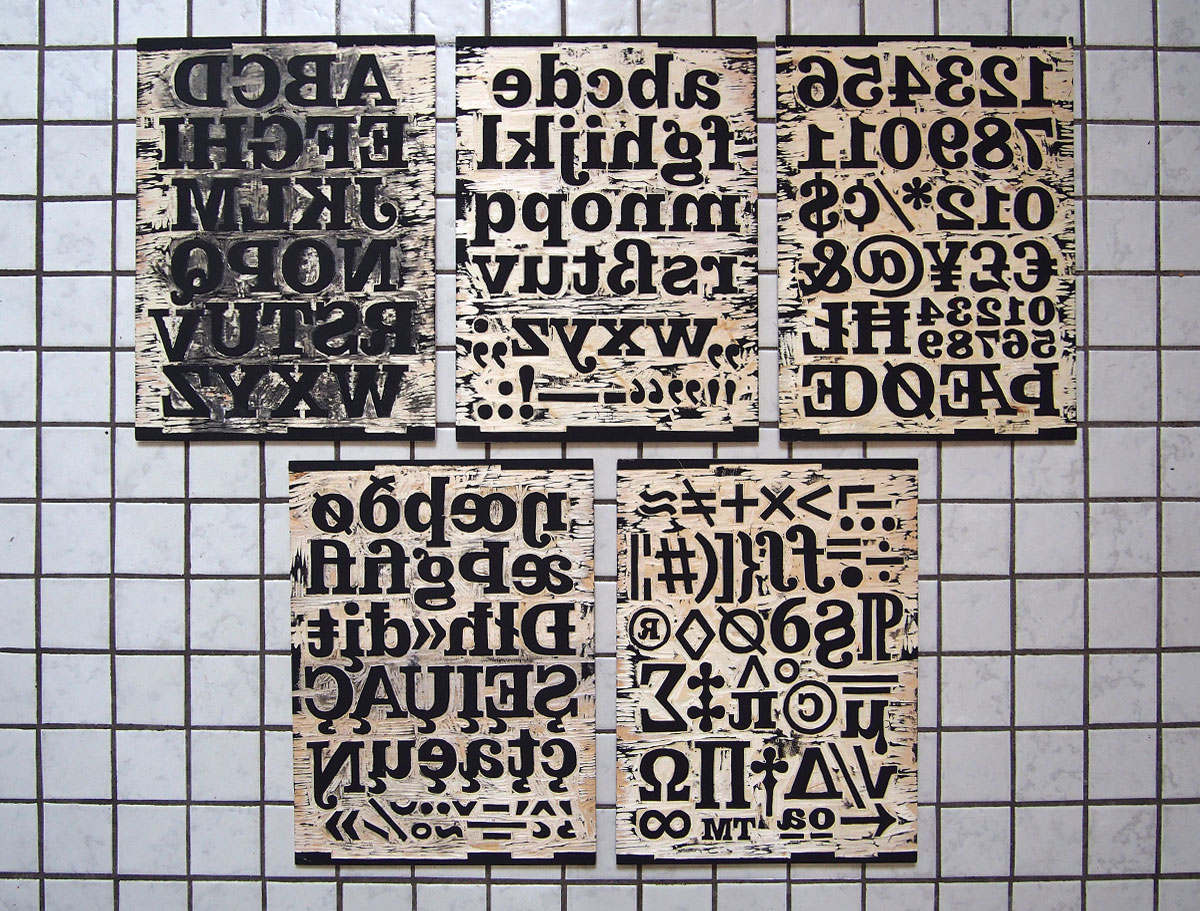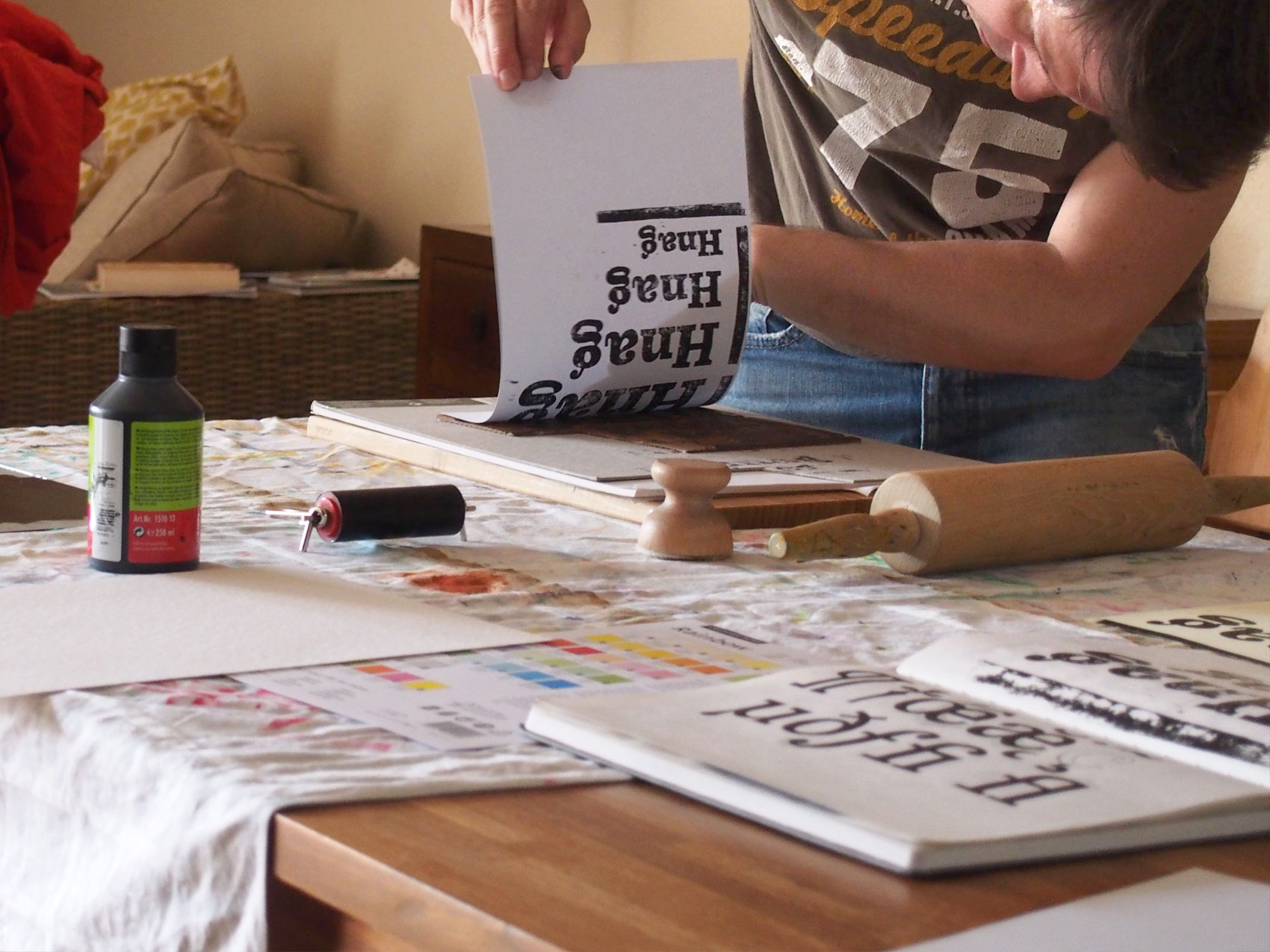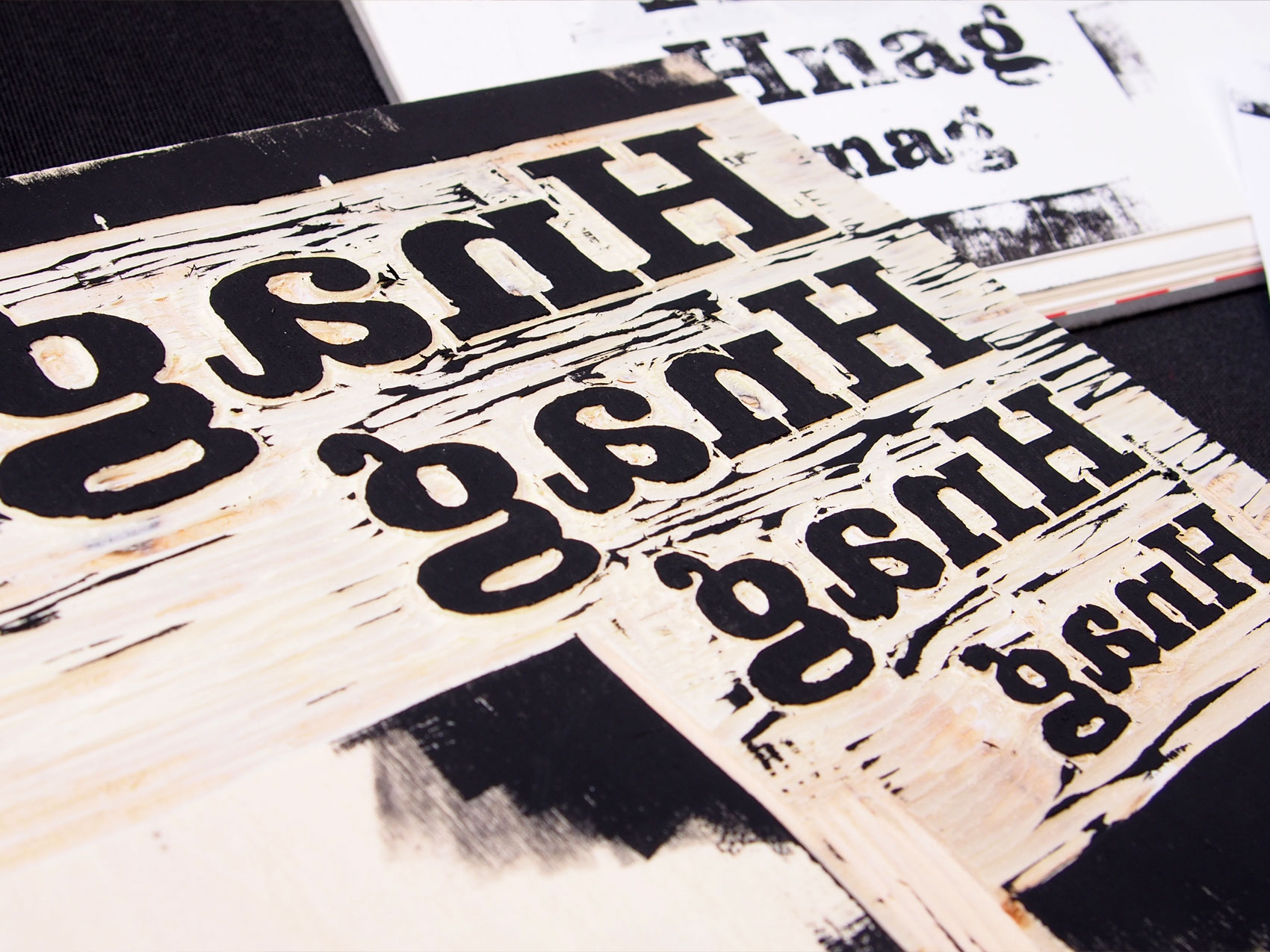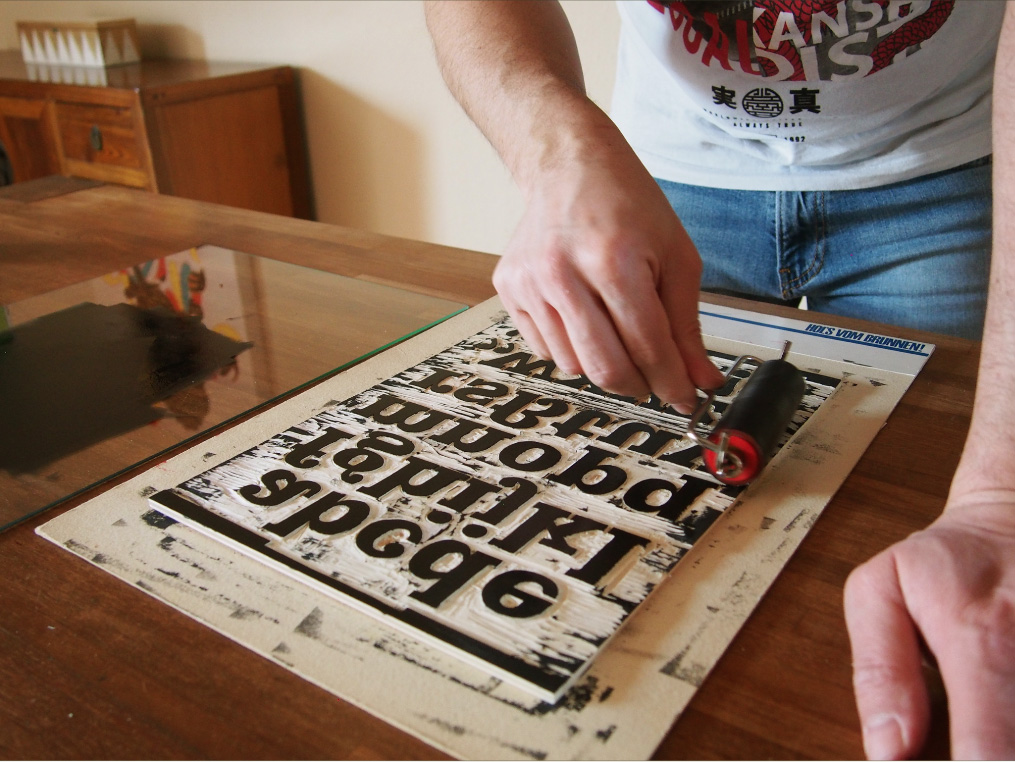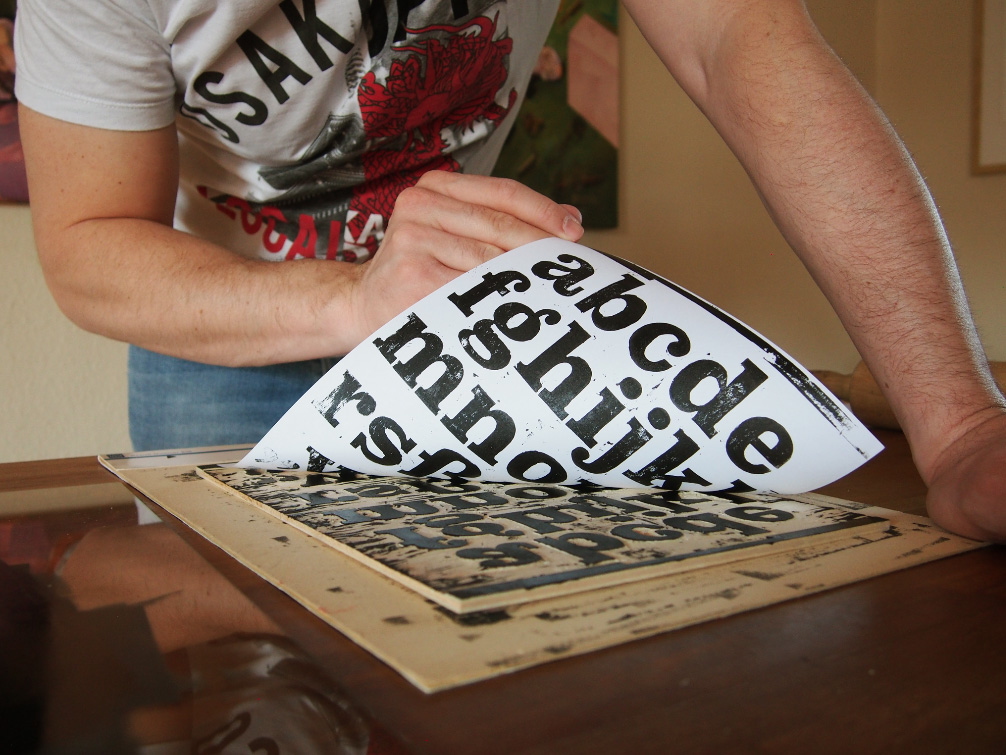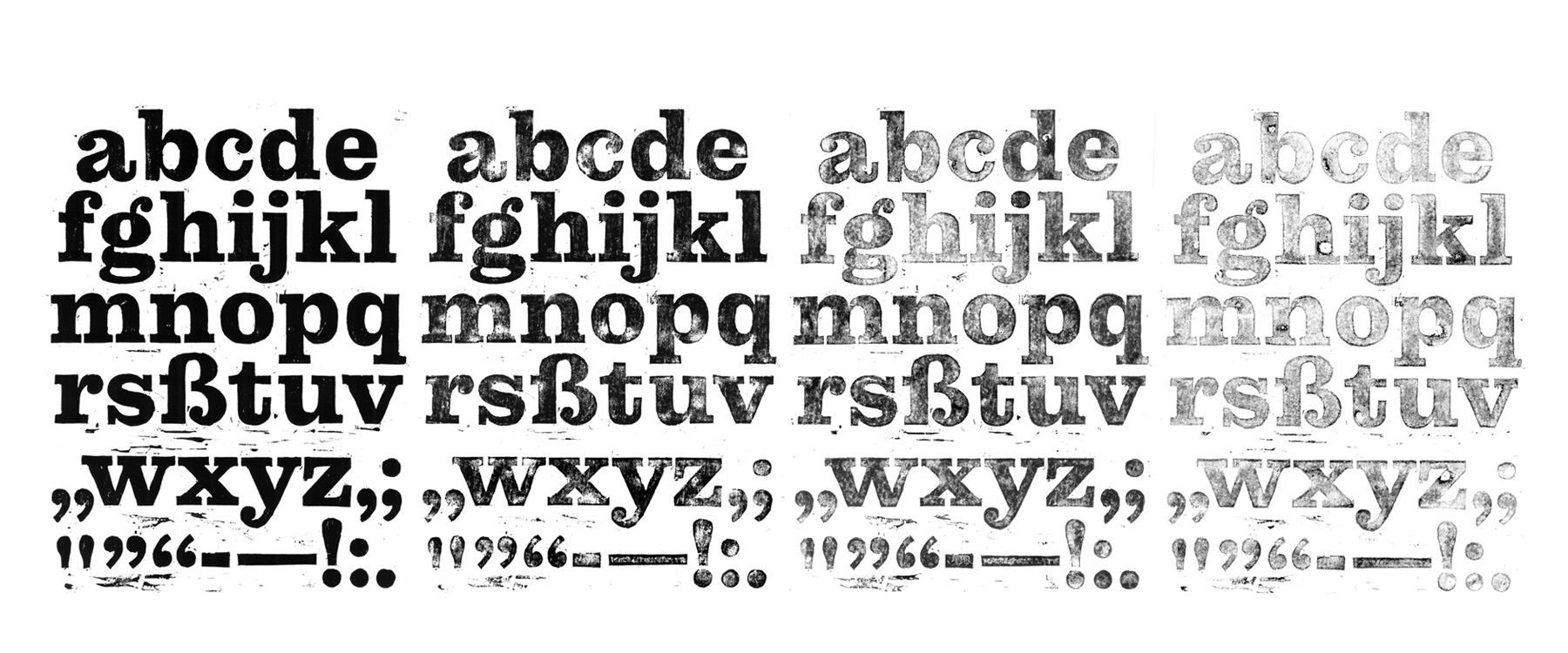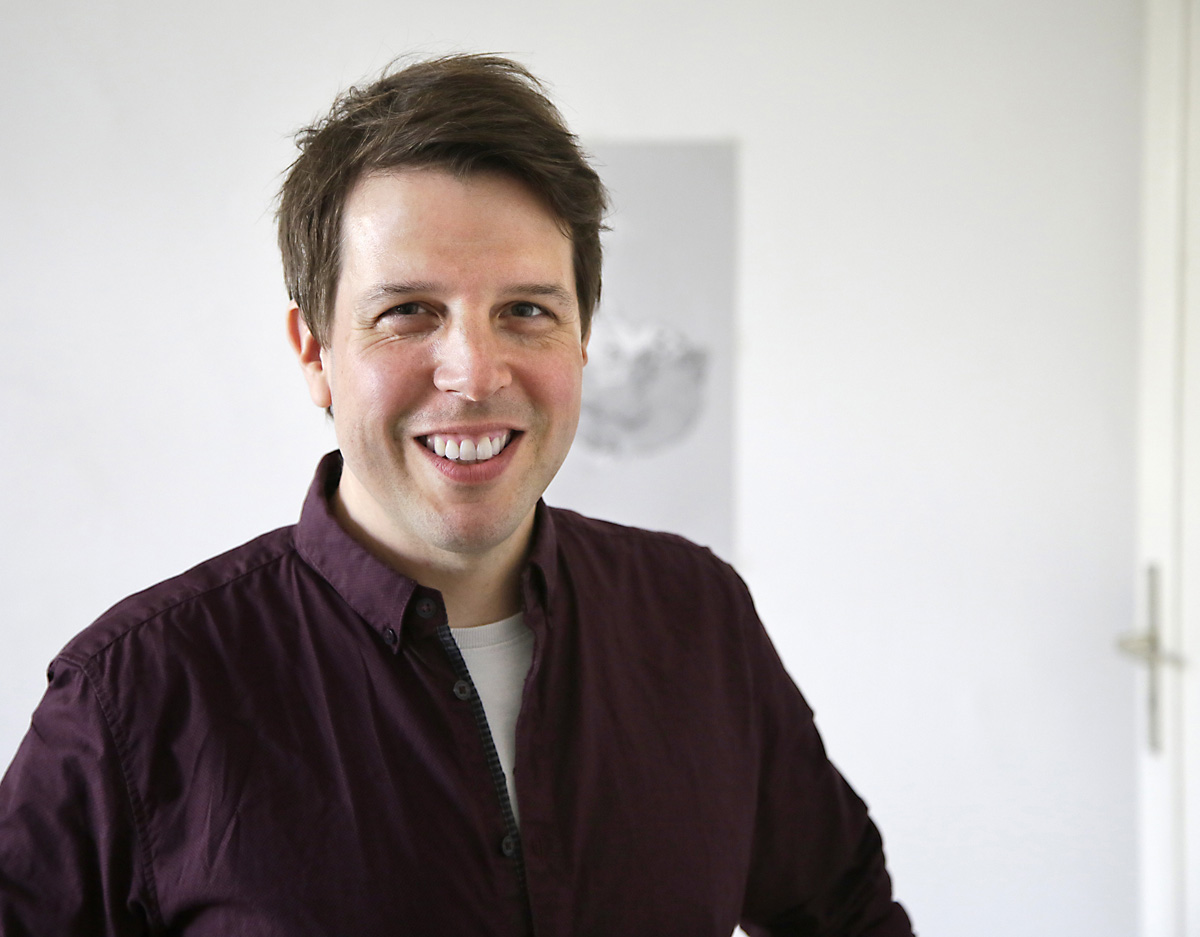About
On a day-to-day basis, I find myself plagued with digital garbage and poorly printed bulk runs by the advertising industry. Therefore, you cannot imagine how much a hand drawn logotype or a letterpress product in my mailbox brightens my day. The warmth of manually printed matter demonstrates a special effort and has become a sign of quality and good taste. Unfortunately, in my everyday life as a graphic designer I rarely have the time to draw letters by hand or the budget to order a lavishly produced short run.
Kontiki can help. The typeface digitally simulates a handmade woodprint, but is less expensive to produce and easier to correct. It offers a designer the possibility to create a printed image that is very close to a traditional woodcut.
To create the Kontiki fonts, 193 glyphs were manually cut into five wooden plates and carefully printed by hand. From countless test prints, the most charming four were selected and digitized to create the different styles. For each of the 560 characters, the font offers four different qualities of print and gives you the opportunity to create a vivid typography according to your own visions.
Kontiki is available at MyFonts – furthermore at Fontspring and in the Abobe Creative Cloud under the name “Pulpo Rust”.
